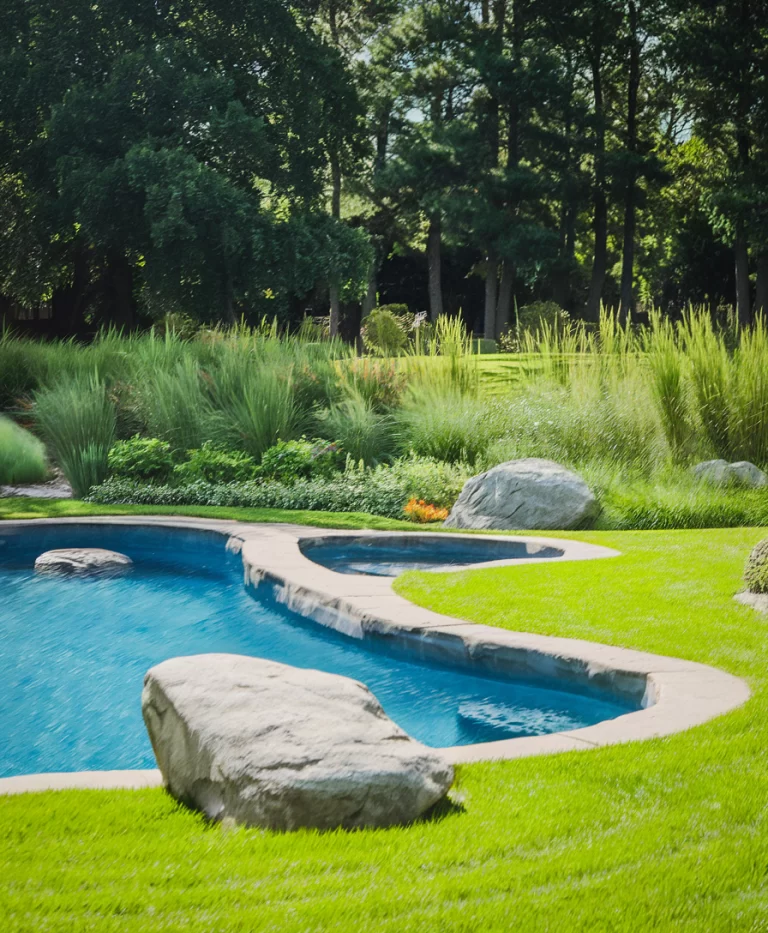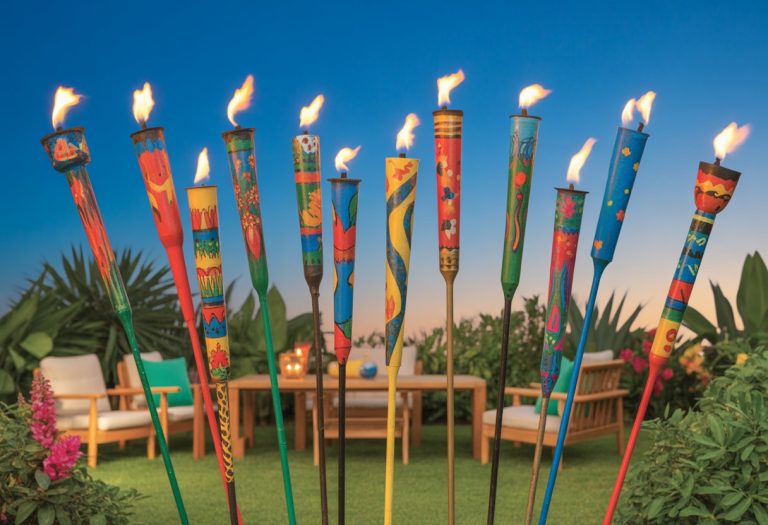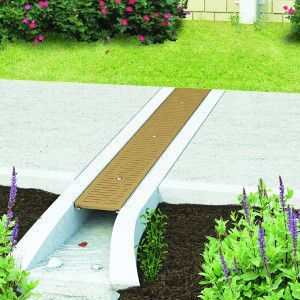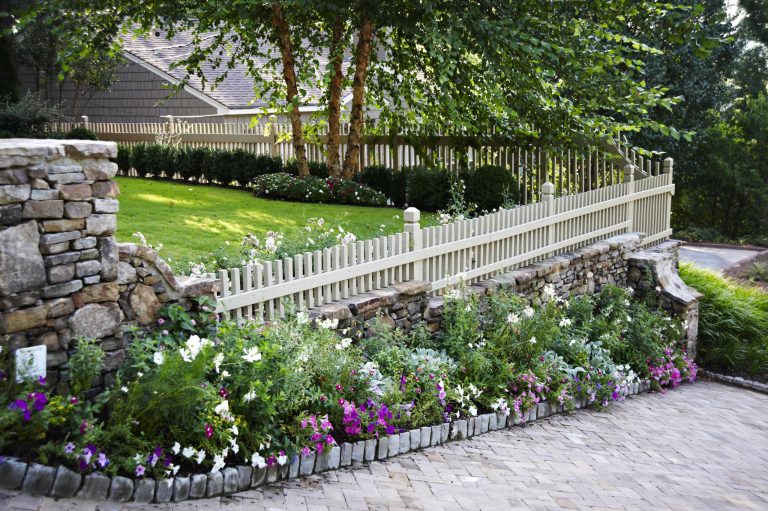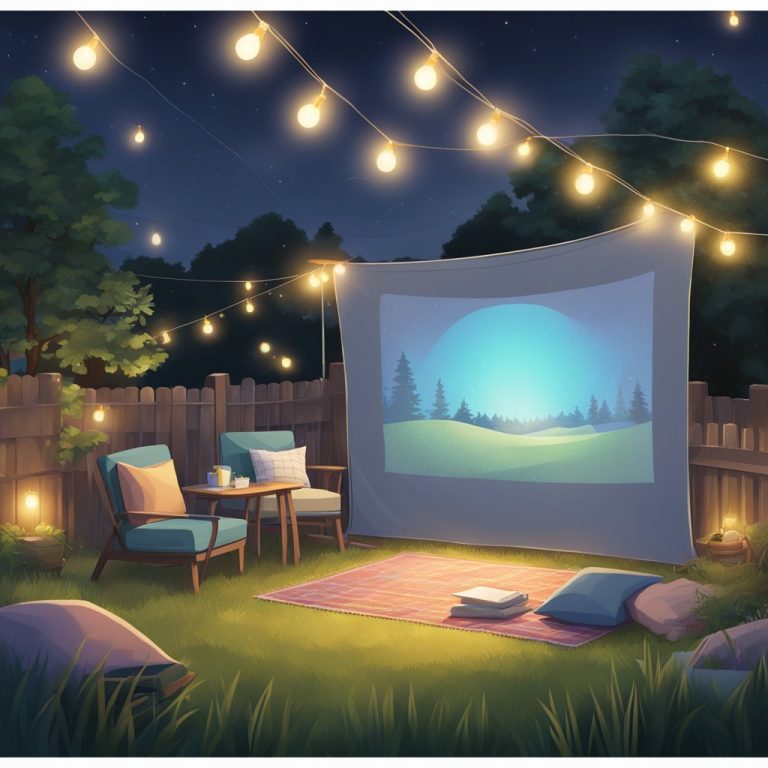15 Fence Color Ideas: Paint the Fence, Break the Rules
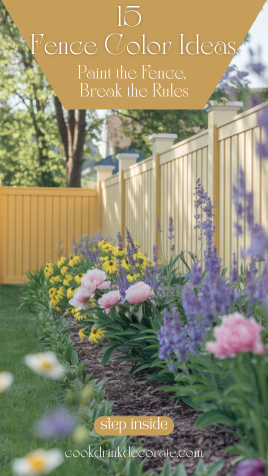
15 Fence Color Ideas: Paint the Fence, Break the Rules
Fence color ideas that are borderline brilliant
Choosing the right color for your fence can make a big difference in how your yard looks and feels. Picking a good fence color is an easy way to refresh your outdoor space and show off your style.
Whether you like bold colors or prefer something simple, there is a wide range of paint ideas to fit your needs. Fresh paint can help your fence look new again and add curb appeal to your home.
Sunny Yellow for a cheerful garden vibe
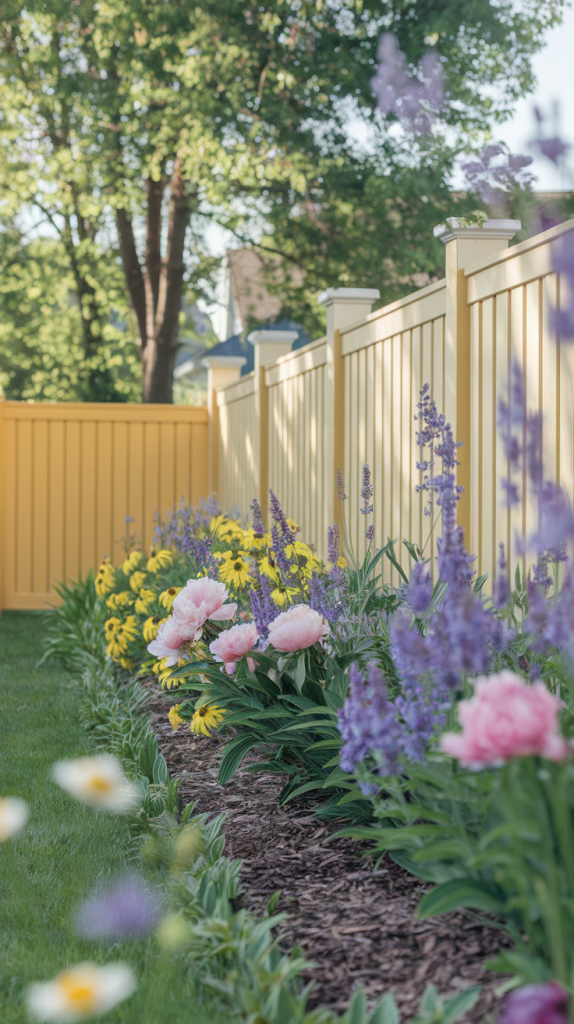
If you want your garden to feel bright and happy, painting your fence sunny yellow is a great idea. This color feels warm and inviting. Even on cloudy days, yellow can help your backyard look cheerful.
Yellow works well with green plants and flowers. The contrast helps your garden look fresh. Your outdoor space can feel more lively, especially when the sunlight hits the yellow panels.
Consider painting all fence panels yellow or try mixing in a few other colors for a playful look. Yellow can make the area feel bigger and more open.
The color yellow is also linked to positive feelings. It can lift your mood when you spend time outside. If you like entertaining, a yellow fence offers a fun backdrop for gatherings or family time.
Painting your fence sunny yellow is a simple way to update your yard. It requires minimal effort but can create a big change in how your space feels. Yellow is a classic choice if you want to keep things light and welcoming.
Electric Blue to add a bold color

If you want a fence color that stands out, electric blue is a great choice. This bright and energetic shade grabs attention right away. It makes your fence impossible to ignore in your yard.
Electric blue works well if you want something modern and lively. It pairs nicely with green plants and brings out the color of your garden. It can also look good with other bold colors for a playful look.
Painting your fence electric blue is a fun way to show off your style. It is especially popular if you have a contemporary home or enjoy creative outdoor designs. This color stays bright and fresh even after rain or sun.
You might want to paint every fence panel electric blue, or just choose a few sections. Either way, it creates a fresh, bold look. If you like to experiment, electric blue might be the right fence color for you.
Lime Green for a playful and fresh look
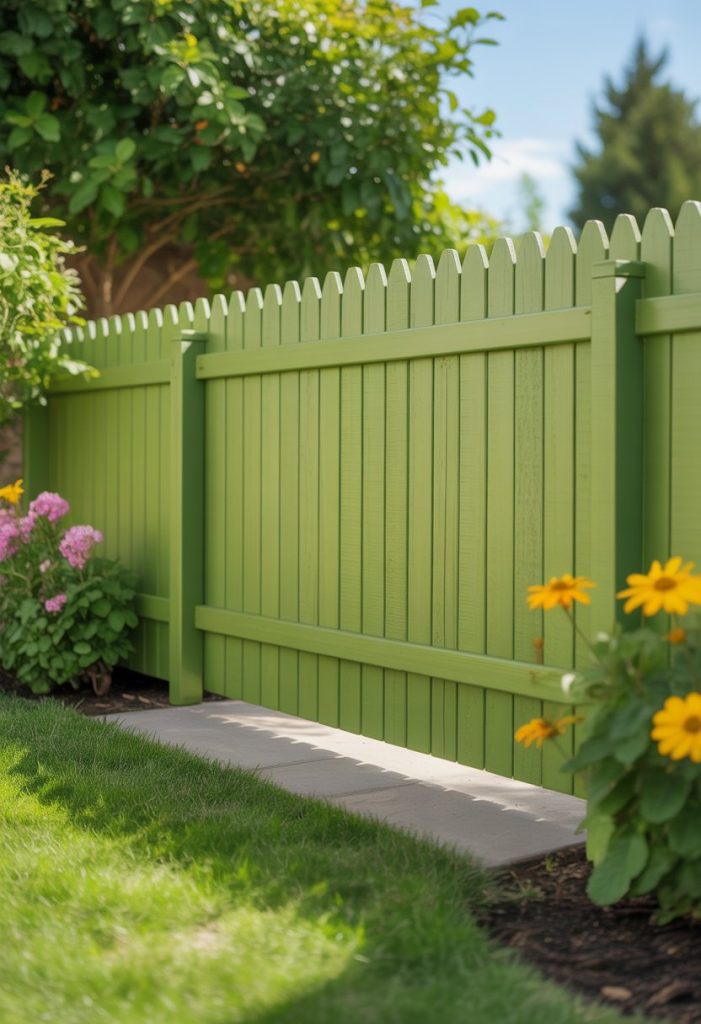
Lime green is a fun way to brighten up your fence. This bold color brings energy and makes your yard stand out in a cheerful way. Your fence can become the center of attention with just a coat of lime green paint.
If you want your garden to feel more lively, lime green works well with plants and flowers. It pairs nicely with both colorful blooms and deep green leaves. This color can also make small spaces feel bigger and more open.
You can paint the whole fence lime green or just add stripes or panels for a creative pattern. If you like unique style, try mixing lime green with other bright shades like yellow or blue. This creates a playful vibe that feels modern and welcoming.
Adding small decorations, like flower pots or outdoor artwork, can make the color stand out even more. Lime green is a good choice if you want something different from classic browns and grays. It helps show off your personality and brings a fresh new feeling to your yard.
Warm Stone like Farrow & Ball’s London Stone
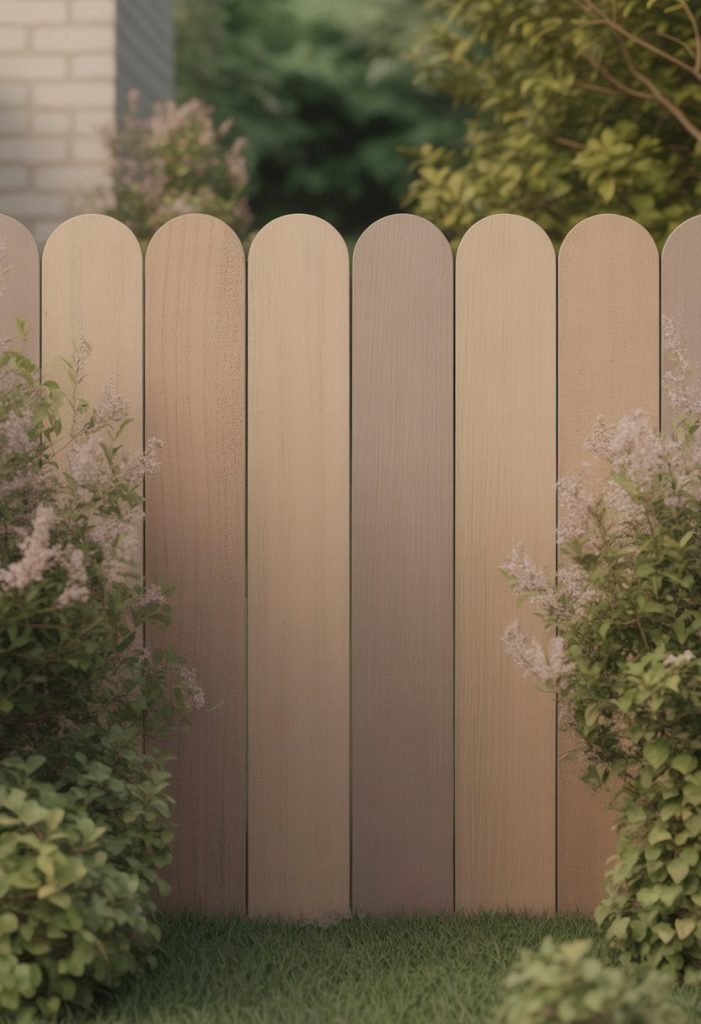
If you want your fence to blend in and look calm, a warm stone color like Farrow & Ball’s London Stone is a good choice. This fence color ideas is a warm, medium brown that feels inviting and natural next to plants and trees.
London Stone has a hint of magenta in its base, which gives it a gentle warmth. It works well with both modern and classic outdoor spaces. You can pair it with lighter colors for a clean look or match it with other deep shades for extra depth.
This color is timeless and doesn’t feel too bold or too dull. Using London Stone on your fence can make your garden feel more open and relaxed.
Several paint brands offer similar shades if you can’t get Farrow & Ball. Look for names like Warm Stone or Simple Stone from brands like Sherwin Williams or Benjamin Moore. These options let you get the same cozy atmosphere with paints that may be easier to find.
Choosing a stone-inspired tone is a great way to keep your outdoor space feeling balanced, welcoming, and easy on the eyes all year round.
Simple Stone by Sherwin Williams for a neutral fence
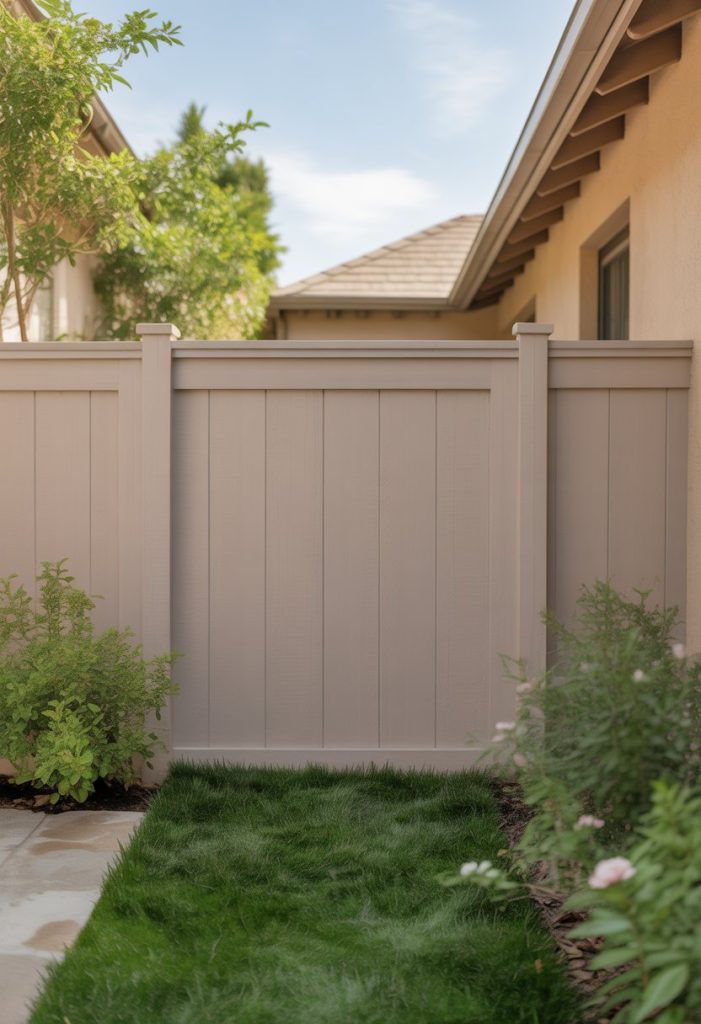
If you want a neutral fence color, Simple Stone by Sherwin Williams works well. This shade is a soft, light gray with a hint of warmth. It looks good with many styles and outdoor settings.
Simple Stone helps your fence blend in without looking too plain. This fence color ideas can match both modern and traditional homes. It also lets your plants and yard decor stand out.
With a light reflectance value around 58, Simple Stone brings a gentle brightness to your space without being harsh. It’s easy on the eyes in sunlight and shade.
You can pair this color with whites, darker grays, or even natural wood tones. It’s a calm choice that keeps your yard feeling welcoming and comfortable all year.
Classic White to brighten any backyard
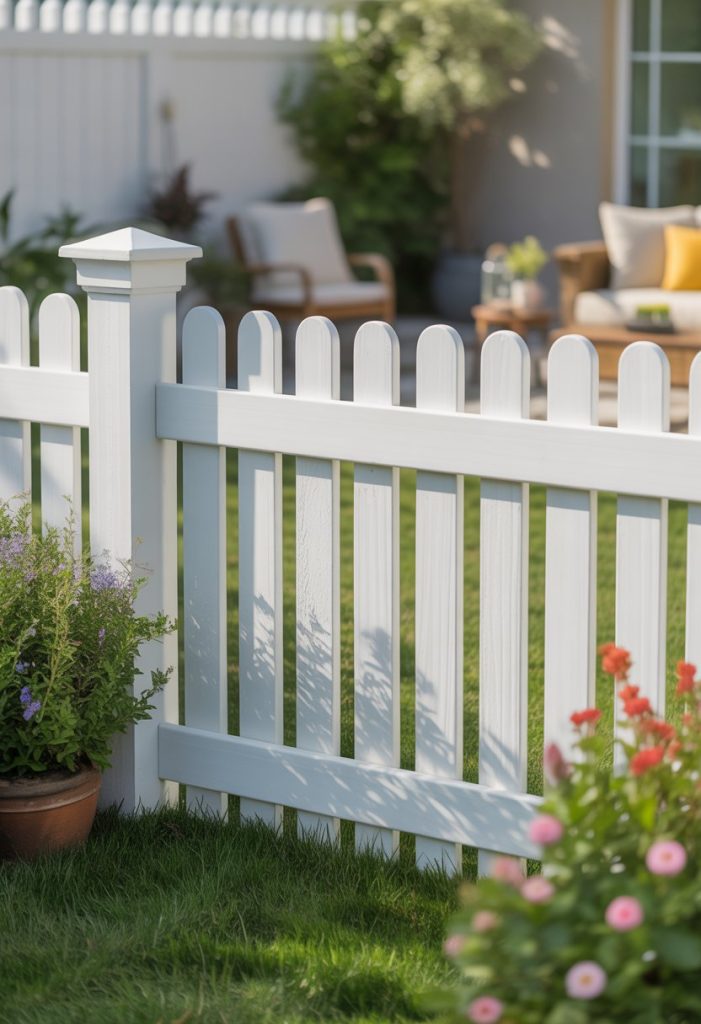
A classic white fence is a popular choice for many backyards. It gives your space a clean, bright look without feeling too bold or overwhelming.
White pairs well with just about any house color or garden style. If you have lots of flowers or green plants, the white helps them stand out more.
You can use bright white for a crisp, modern effect. For a softer look, try antique white or cream.
Many homeowners pick white because it makes their yard feel open and cheerful. It can also make a smaller backyard seem bigger. It’s hard to go wrong with white fence color ideas.
A white fence works with wood, vinyl, or metal. Painting or staining your fence white is a simple way to refresh your outdoor space.
This choice never goes out of style and looks good year-round. If you want a safe and welcoming look for your backyard, classic white is a strong option.
Soft Gray for a modern, sleek appearance
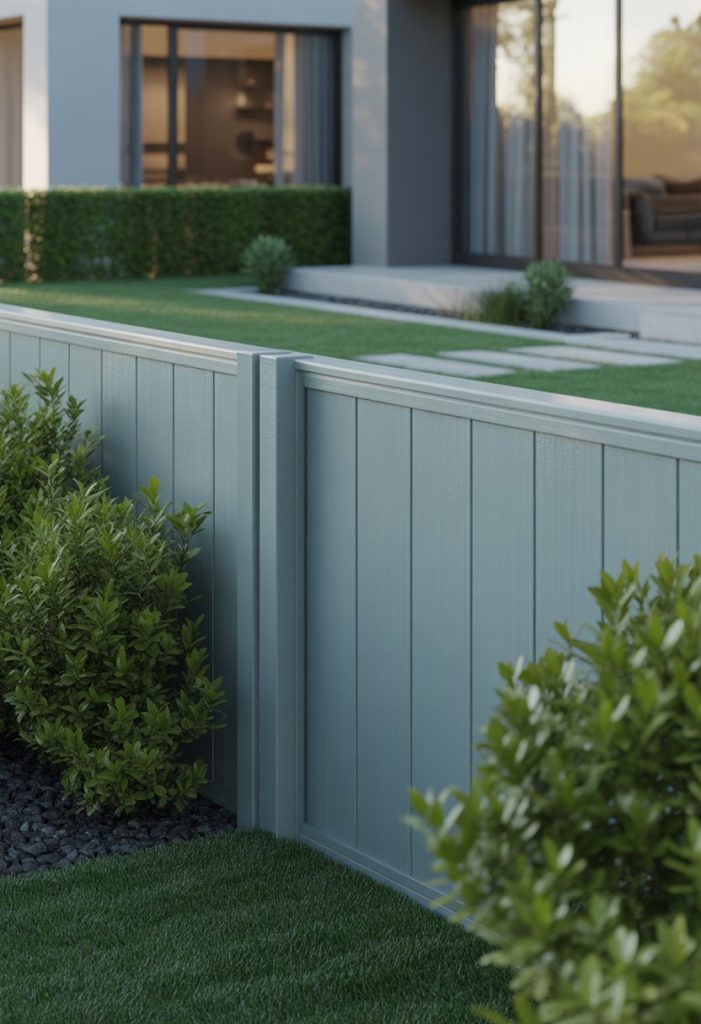
If you want a modern look for your fence, soft gray is a great choice. This color creates a clean and calm backdrop for your backyard or garden. It works well with both new and old style homes.
Soft gray is also very versatile. It matches most plants and flowers, allowing them to stand out without being too bold or overwhelming. Your outdoor space will look tidy and put-together with this color.
Many homeowners use soft gray to make small gardens feel bigger and more open. Light gray shades can help reflect natural light, making the area look bright and fresh.
This color works well with other neutral shades like white, black, or beige. You can easily match it with your patio furniture or garden décor.
Choose soft gray if you want something fresh and modern, without being too flashy. It gives your fence a simple but stylish look that will stay in style for years.
Deep Navy to create a sophisticated feel
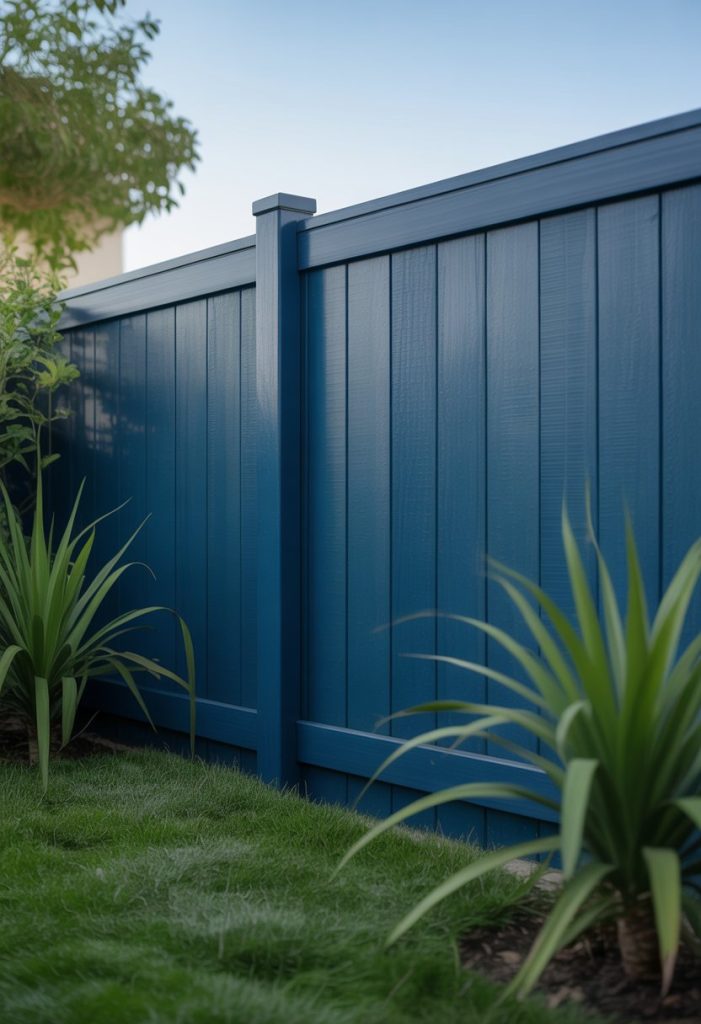
Deep navy is a great choice if you want your fence to look stylish and modern. This rich blue works well with most landscaping and brings a quiet drama to your yard. Navy feels bold but doesn’t overpower the space.
When you paint your fence deep navy, your flowers and plants stand out more against the dark background. This creates a sense of depth and helps bright colors pop.
Navy blue also fits both classic and contemporary homes. It gives your outdoor area a polished feel that lasts through different trends.
If your garden has lots of greenery, navy makes everything look even more vibrant. You might notice your fence feels fresh each season, even as the plants change.
Choosing deep navy is a simple way to add elegance to your home’s outside space. The color holds up well outdoors and looks clean for years.
Rich Chocolate Brown for a natural wood look
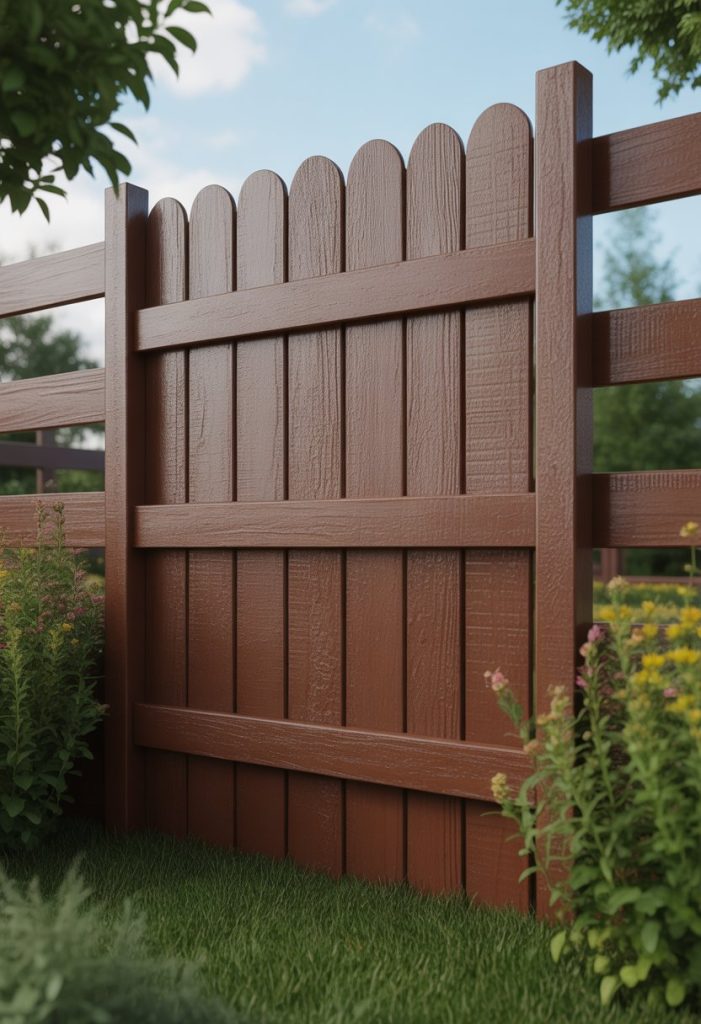
Rich chocolate brown is a classic choice when you want your fence to have a warm, natural feel. This color can remind you of real wood, even if your fence is made from composite or other materials.
Chocolate brown blends well with plants, grass, and trees. It adds a sense of harmony to your outdoor space because it matches so well with nature.
You might like these fence color ideas if you want your fence to look elegant, but not flashy. It gives your yard a polished appearance without standing out too much.
Dark brown fences also pair well with many home styles. If your house has white trim, the deep brown creates a clean contrast that looks crisp and neat.
This shade is practical too. It can help hide dirt and weather marks better than lighter fence colors. You’ll spend less time worrying about small marks or stains.
Rich chocolate brown is both cozy and versatile. It fits in almost any backyard, so you don’t have to worry about it clashing with your garden or patio style.
Barn Red for a rustic country charm

Barn red is a classic color that brings a warm, cozy feeling to your yard. It works well on wooden fences and gives them an old-fashioned, farmhouse look.
This color pairs especially well with white or gray houses, making your fence stand out in a charming way. Barn red’s deep, rich tones also look great against green lawns and gardens, adding extra color without being too bold.
If you want your fence to feel welcoming and full of country character, barn red is a safe choice. It never goes out of style and always feels inviting.
You can choose a traditional barn red or try a lighter or darker shade, like cherry or burgundy. Each option gives your fence its own unique spin while still keeping that rustic charm.
No matter which shade you pick, barn red is easy to match with other outdoor features. It brings warmth and a sense of comfort to any outdoor space.
Muted Sage Green to blend with garden foliage
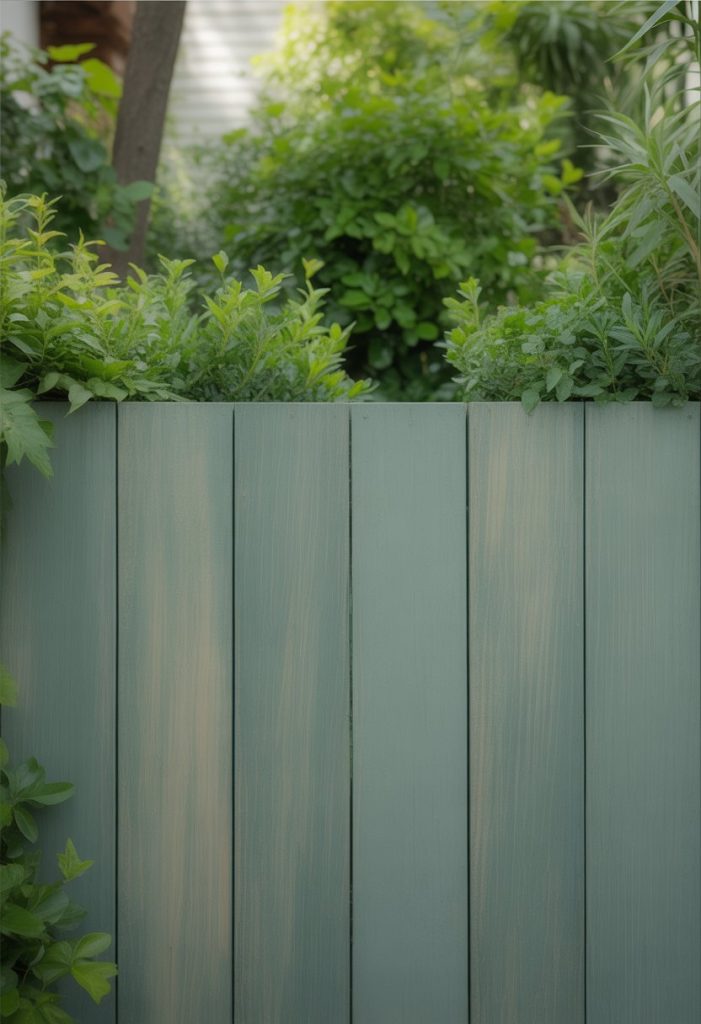
Muted sage green is a gentle, earthy color that can help your fence blend with your garden plants. This shade fits right in with leafy greens and flowering plants, making your outdoor area look calm and natural.
If your goal is to have your fence fade into the background, sage green is a smart option. The color does not compete with your plants and supports all kinds of garden styles, from cottage gardens to modern designs.
Sage green also works well if you want your flowers and shrubs to stand out more. Its subtle tone helps create a peaceful feeling and lets the colors of your plants take center stage.
Choosing sage green for your fence can give your space a coordinated and neat look. It brings harmony and can make small gardens feel a bit larger by blending with surrounding greenery.
Pale Sky Blue for a calming ambiance

If you want your fence to feel peaceful and refreshing, pale sky blue is a great choice. This color brings a light, airy feeling to any yard. It can make the space look larger and brighter, which is helpful for small gardens or areas with less sunlight.
Pale sky blue works well with white, gray, or beige accents. These combinations create a timeless and clean look that is easy on the eyes. You may notice that the color helps set a soothing mood, making your outdoor space feel calm.
This color is popular for homes that want a gentle pop of color without being bold or overwhelming. It looks especially nice with lots of greenery around the fence. It can also highlight flowers and plants, making them stand out more.
Choosing pale sky blue can help create a relaxing backdrop for family gatherings or quiet evenings outside. If you like soft colors that don’t demand too much attention, this option is easy to enjoy year-round.
Charcoal Black for a dramatic statement
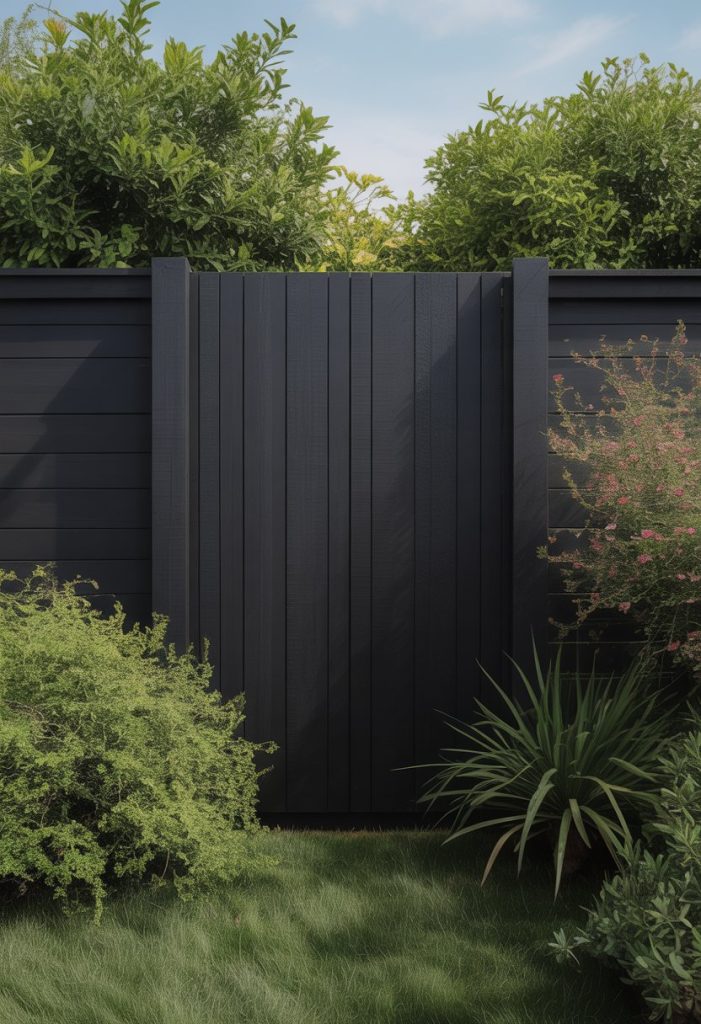
If you want your fence to stand out, charcoal black is a strong choice. This deep shade brings a modern and stylish look to your outdoor space. It works well whether you have a classic or a more contemporary home.
Charcoal black creates a bold background for plants and flowers. Greens look brighter and blooms appear more colorful against the dark color. Your garden can feel more vibrant without changing the plants themselves.
Unlike plain black, charcoal black has a bit more depth and softness. It can look dramatic without feeling too harsh. This color also helps hide dirt and marks better than lighter shades.
Charcoal black is a popular color for fences right now. It gives your yard a fresh update while still looking timeless. If you want something different from traditional wood tones or white, charcoal black is a good way to go.
Rust Orange to add warmth and energy
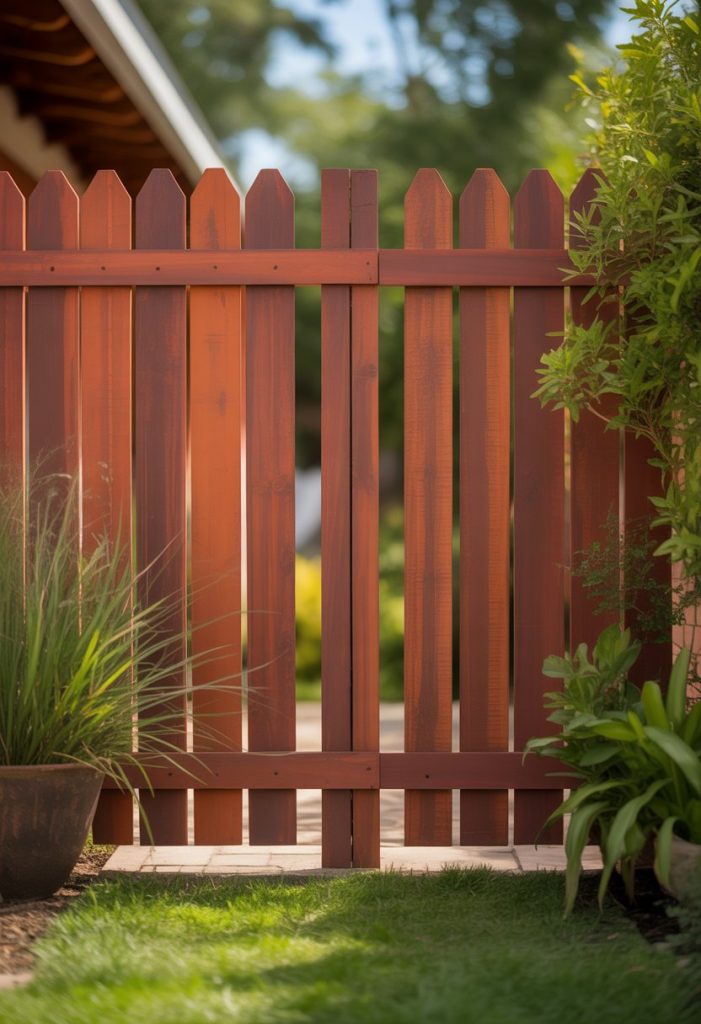
If you want your fence to stand out and feel inviting, consider rust orange paint. This earthy color comes from nature and has a cozy, welcoming vibe. It makes outdoor spaces feel warmer and more lively.
Rust orange pairs well with green plants and natural wood. The color fits nicely with lawns, gardens, or desert landscapes. It blends with the surroundings rather than fighting them.
You can use rust orange for a whole fence or just as an accent. If your house is a neutral shade, this color adds a fresh, bold look.
Rust orange also shines against blue or turquoise. This combination can create a cheerful and balanced appearance in your yard. Try adding this color if you want a space that feels fun and full of energy.
Dusty Rose for a subtle, cozy feel
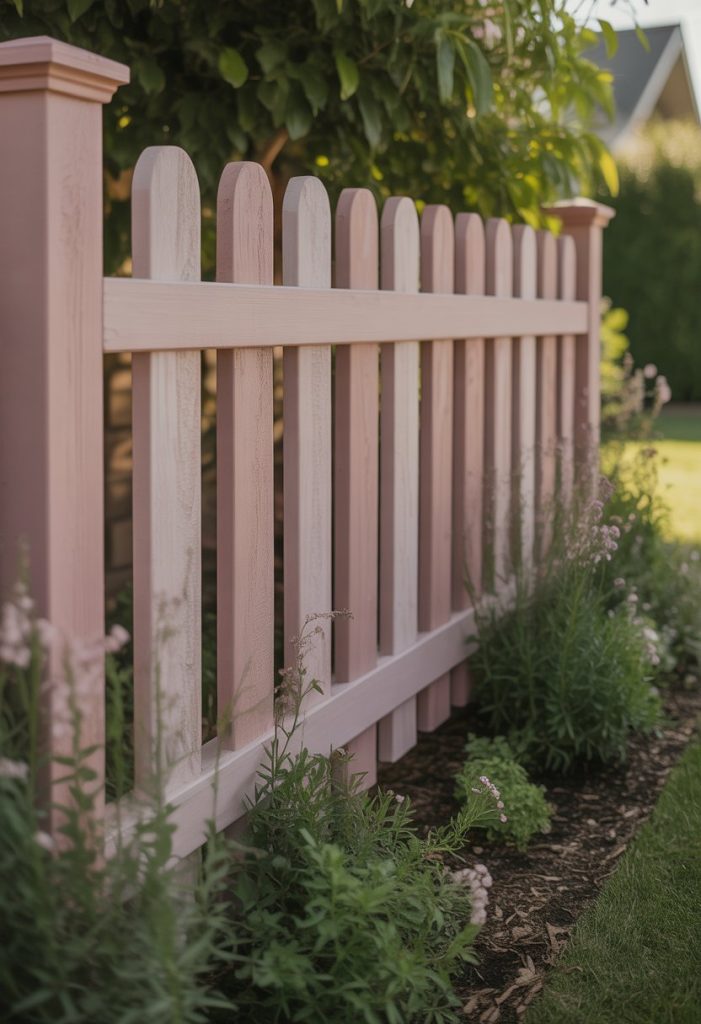
If you want your fence to feel warm and inviting, consider painting it dusty rose. This popular color is a muted pink shade that works well in outdoor spaces. It blends gently with natural surroundings, giving your yard a soft and welcoming look.
Dusty rose is easy to match with flowers, greenery, or even neutral patio furniture. The color creates a calm setting that feels peaceful but not dull.
You can use dusty rose to give your fence a unique look without it feeling too bold. It also goes nicely with other gentle colors, like white, cream, or light gray.
These fence color ideas are a good choice if you prefer a style that sits between playful and elegant. If you want your backyard to feel restful and charming, dusty rose is worth considering for your fence.
How Fence Color Ideas Impact Your Home’s Curb Appeal
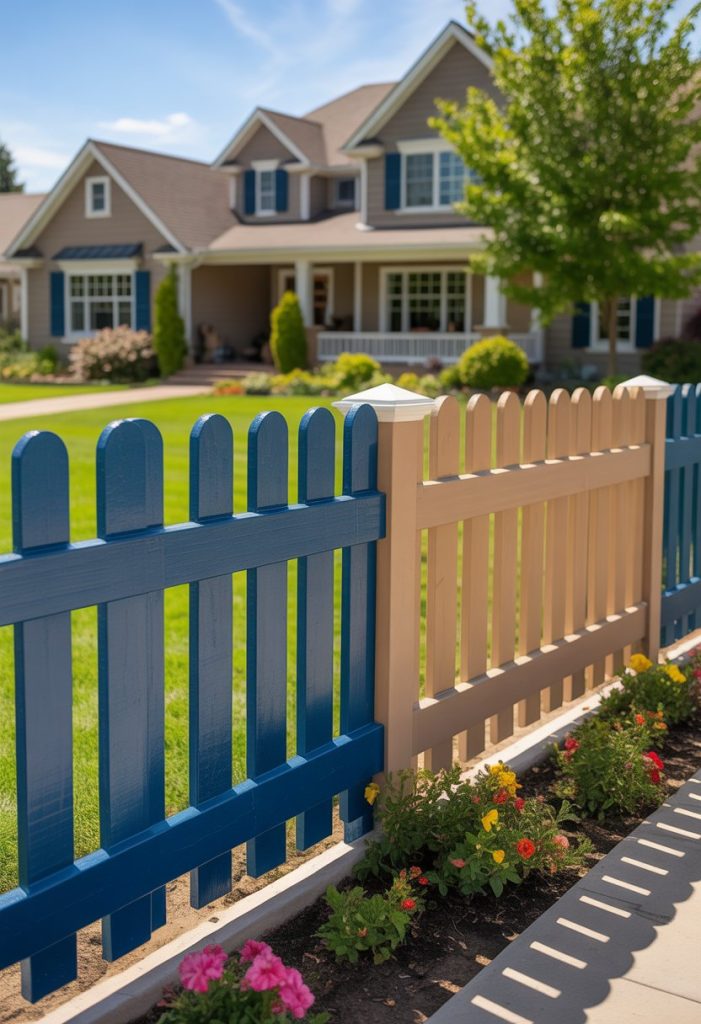
The color you choose for your fence can change how your home looks from the street. A fence color that fits well with the surroundings can make your yard look polished and sharp.
Choosing Fence Color Ideas to Complement Your Landscaping
Your yard’s plants, flowers, and trees should help guide your fence color choice. A green or dark brown fence can blend with leafy gardens, letting your plants stand out more. White and other light colors work best where landscaping is minimal or has a lot of bright flowers.
If you want a natural look, neutral colors like gray, beige, or taupe can soften the border between your yard and neighboring properties. For yards with colorful plants, simple fence shades help highlight the plants rather than compete with them.
Here’s a quick table to help you match fence colors to your landscaping:
| Landscaping Style | Suggested Fence Colors |
|---|---|
| Lush/Greenery-Heavy | Deep Green, Dark Brown |
| Bright Flowers | White, Soft Gray, Light Blue |
| Desert/Dry Landscapes | Taupe, Stone, Beige |
| Minimalist/Modern | Black, Charcoal, Navy Blue |
Creating Visual Harmony With Exterior Features
Think about your home’s roof, siding, and trim when picking a fence color. If your house is painted a warm color, a similar or lighter shade for your fence can help everything flow together. For cool-toned homes, grays and blues often work well.
Matching the fence to parts of your house creates unity. For example, if your window frames are black or dark gray, painting your fence the same color ties the whole look together. Accent colors from your front door can also be repeated on the fence for a bolder statement.
To avoid clashing styles, avoid strong colors that don’t appear anywhere else on your house or yard. Soft, harmonizing tones are safe if you are unsure, but repeating a main accent thoughtfully can create a modern, pulled-together look.
Preparation Tips Before Painting Your Fence
Getting your fence ready to paint is important for both how it will look and how long the finish will last. Good prep work helps paint stick better and helps your fence stay protected from rain, sun, and other weather.
Cleaning and Priming for the Best Finish
Start by washing the fence. Remove dirt, dust, mold, algae, and loose debris using a hose with a spray nozzle or a pressure washer on a low setting. For stubborn spots, use a stiff brush and soapy water. Let the fence dry completely—painting on a damp surface makes the paint peel later.
If your fence has old, peeling paint or rough wood, use sandpaper or a sanding block to smooth the surface. Scrape away any flaking sections carefully. Fill cracks and holes with wood filler. Once everything is clean and smooth, check for any nails or screws that stick out and hammer them flat.
Next, apply a quality exterior wood primer, especially if the wood is new or you sanded down to bare sections. Primer helps the paint stick better and gives you a more even color. Allow the primer to dry based on the label directions. This step gives your new paint the best chance at lasting years.
Fence Color Ideas – Selecting the Right Paint for Durability
Choose a paint that is made for outdoor fences and can handle your area’s weather. Look for labels that say “exterior” and “weather-resistant.” These paints are made to handle rain, sun, and temperature changes without fading or peeling fast.
Oil-based and acrylic latex paints are both popular. Acrylic latex is easy to clean up and dries quickly. Oil-based paint can add extra protection but is harder to clean. For cedar or redwood fences, acrylic latex paint helps prevent tannin stains from bleeding through.
Pick a finish that matches your goal. Matte and satin finishes hide small flaws, while gloss finishes are easier to wash but can show more surface marks. To keep your color looking fresh, pick a brand known for UV resistance and longer-lasting color. Always check the label and ask at your local store if you’re not sure.

